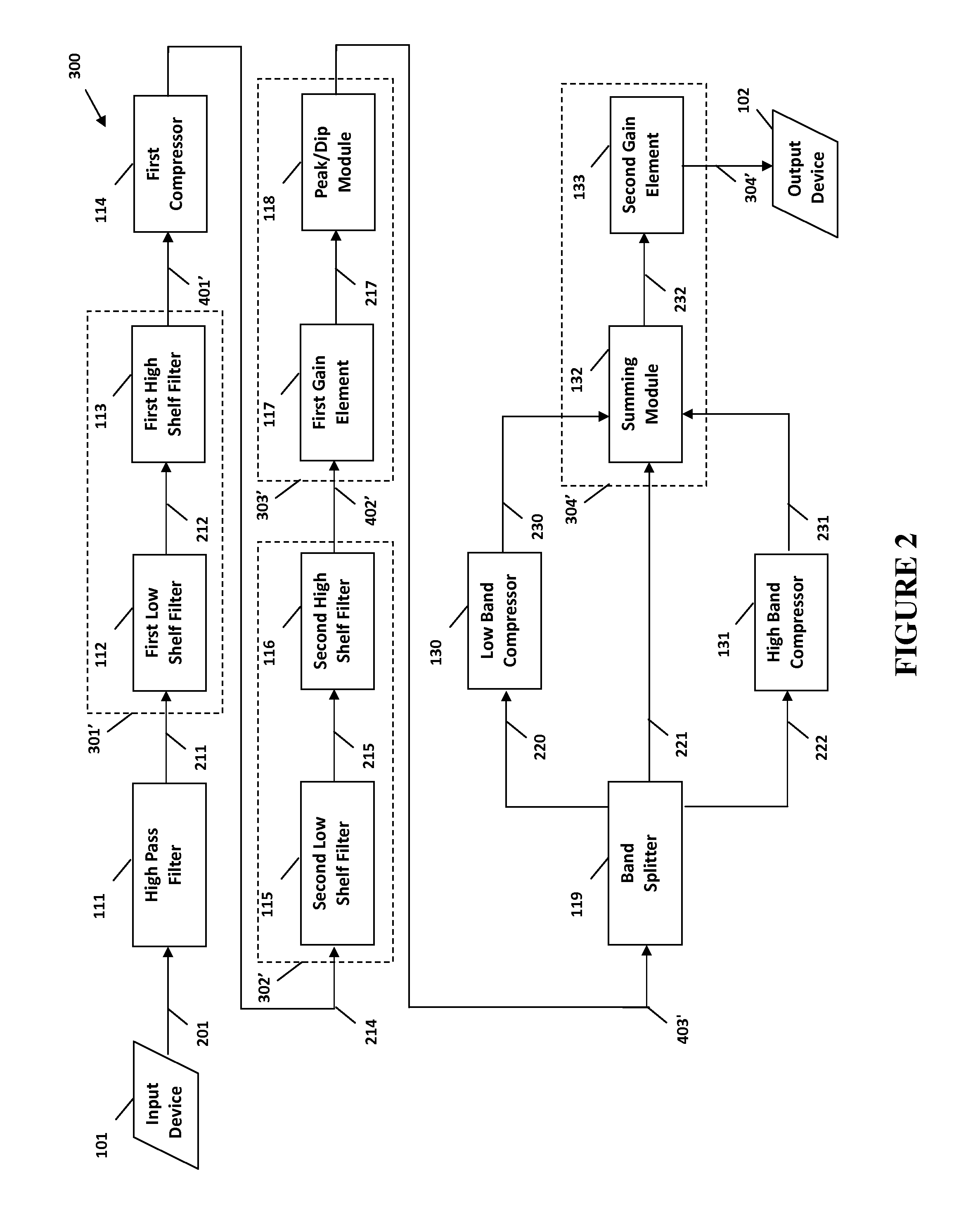In-line signal processor
a signal processor and in-line technology, applied in the direction of sound input/output, volume compression/expansion, instruments, etc., can solve the problems of inconvenient hardware, large expense, and increased signal overshoots or undershoots, so as to increase or decrease overshoots or undershoots.
- Summary
- Abstract
- Description
- Claims
- Application Information
AI Technical Summary
Benefits of technology
Problems solved by technology
Method used
Image
Examples
Embodiment Construction
[0027]As illustrated by the accompanying drawings, the present invention is directed to systems, methods, and apparatuses for digitally processing an audio signal. Specifically, some embodiments relate to digitally processing an audio signal in order to deliver studio-quality sound in a variety of different consumer electronic devices.
[0028]As schematically represented, FIG. 1 illustrates at least one preferred embodiment of a system 100 for digitally processing an audio signal, and FIG. 2 provides examples of several subcomponents and combinations of subcomponents of the modules of FIG. 1. Accordingly, and in these embodiments, the systems 100 and 300 generally comprise an input device 101, a high pass filter 111, a first filter module 301, a first compressor 114, a second filter module 302, a first processing module 303, a band splitter 119, a low band compressor 130, a high band compressor 131, a second processing module 304, and an output device 102.
[0029]The input device 101 is...
PUM
 Login to View More
Login to View More Abstract
Description
Claims
Application Information
 Login to View More
Login to View More - R&D
- Intellectual Property
- Life Sciences
- Materials
- Tech Scout
- Unparalleled Data Quality
- Higher Quality Content
- 60% Fewer Hallucinations
Browse by: Latest US Patents, China's latest patents, Technical Efficacy Thesaurus, Application Domain, Technology Topic, Popular Technical Reports.
© 2025 PatSnap. All rights reserved.Legal|Privacy policy|Modern Slavery Act Transparency Statement|Sitemap|About US| Contact US: help@patsnap.com



